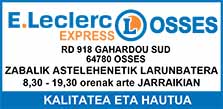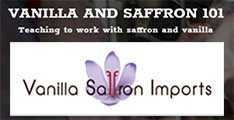Stephen Heyman. At last year’s Maison & Objet design fair, Mr. Iratzoki won plaudits for designing one of the world’s first bioplastic chairs made of a biodegradable plant-based polymer. That shell chair, part of a long collaboration with the Basque furniture brand Alki, is only one example of Mr. Iratzoki’s determination to promote his native region. (Mr. Iratzoki was born in France in St. Jean-de-Luz.) He has also recently revamped the brand identity of Cazenave (a Basque chocolate company) and helped design the interiors of a luxurious eco lodge in Saubion, north of Biarritz.
This year, he founded a new practice with a Basque designer of Spanish extraction, Ander Lizaso, with the aim of creating a multipurpose design studio inspired by and servicing the entire Basque country (French and Spanish). The pair has already made waves with a table collection that subtly combines solid oak and iron forged at a historic ironworks in Navarre, Spain. The following is an edited transcript of a conversation with Mr. Iratzoki.
Q. How do the design traditions of the Basque country inspire your work?
A. The labor, the making, is an important thing in Basque culture. There’s a strong agricultural tradition which is closely followed by industry, with a tendency toward rugged and well-made products that have a sober aspect to them. From a distance, that has an influence on our work. Ostentation is not my cup of tea. We’re also really close to traditional manufacturing processes. In our designs for Alki, we have played with historical memory, using traditional crafts from woodworking to forged iron to woven chestnut.
Why did you decide specifically to base your practice in a one-room studio in the woods?
A. The studio’s cabin concept and location was thought with the aim of having a space that was a bit apart from the world, some sort of retreat from where it’s comfortable to work and create in calmness. I think this gives us some serenity — and not too many visits.
Did you use any special materials to design the cabin?
A. The most remarkable material would be the timber used for the exterior. My father gathered these very beautiful planks of wood from some old building 50 years ago, and used it for a stable he built himself. Then, when I thought of building a studio in the exact same place, I decided that I wanted to use these very special planks, of a kind of pinewood that grows very slowly and has really nice texture. Also, right at the entrance there’s a big stone that serves as step to get in the cabin, which is raised 25 centimeters from the ground. We found it in the area, and we used it as is, with no modifications whatsoever.
As a Basque designer, do you think it’s important to do work that connects the French and Spanish sides of Basque country?
A. For both my partner Ander and me, that border doesn’t exist. We cross it everyday. We speak Basque, but also Spanish and French. We work in both southern and northern sides of the Basque country. And of course the products that we design travel much further; they can be exhibited in Milan, Cologne or Chicago.



 Lagun bati bidali
Lagun bati bidali Komentarioa gehitu
Komentarioa gehitu








